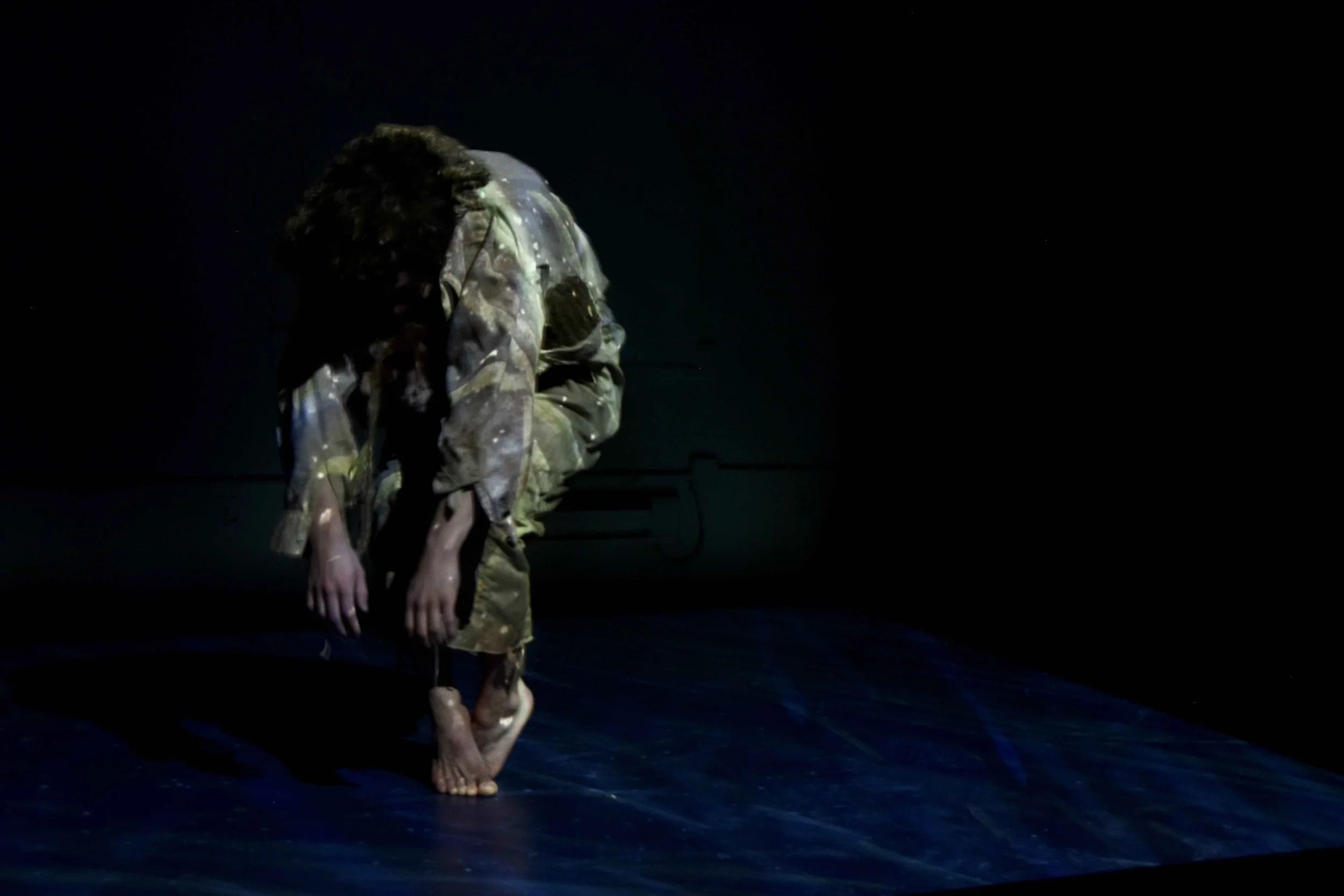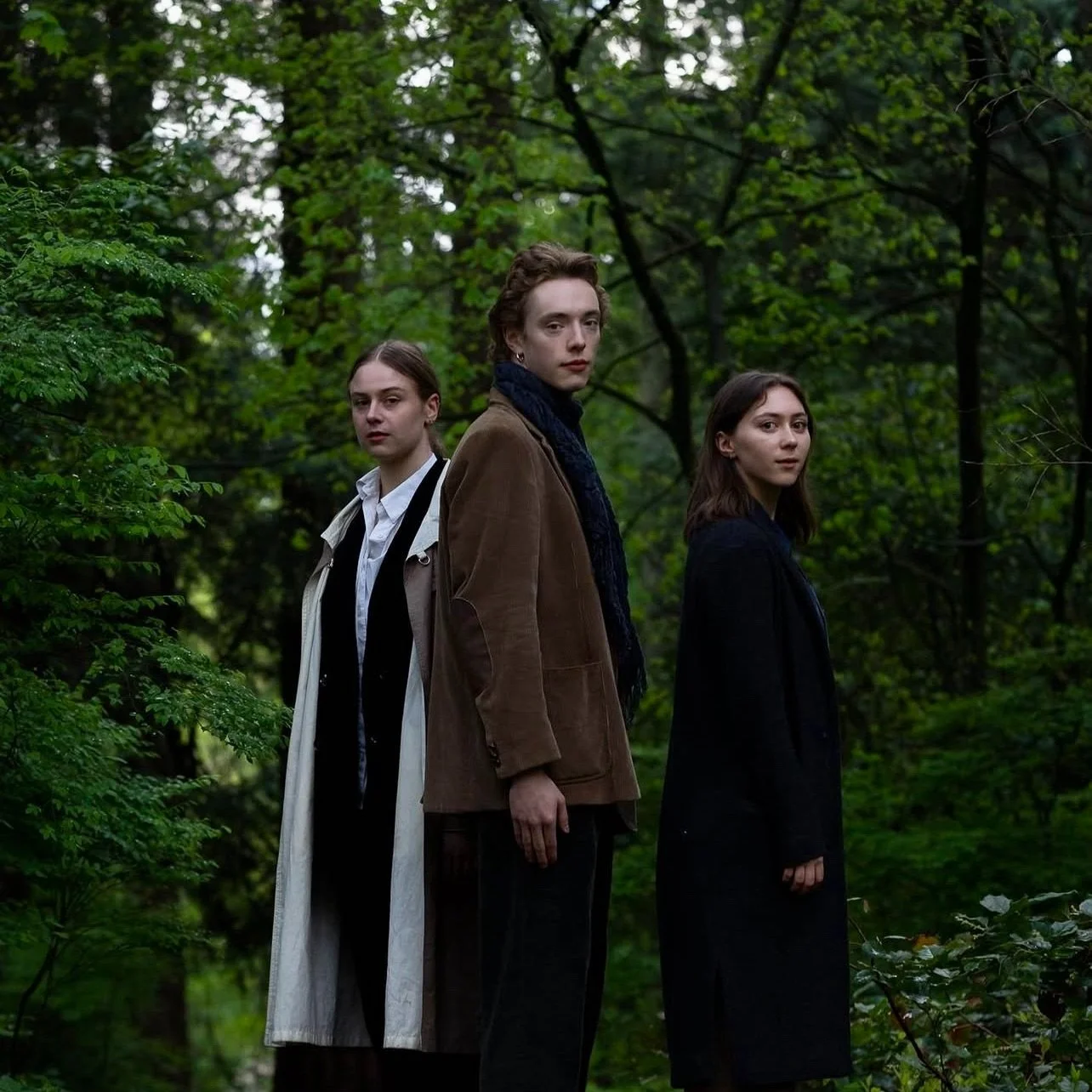Dance review: Ballet BC's Unfold + Give builds four dazzlingly different worlds in an electric return to the stage
Variety and versatility as dancers go from the neonlit to the Baroque
After We Glow. Photo by Michael Slobodian
GARDEN. Photo by Michael Slobodian
Ballet BC presents Unfold + Give at the Queen Elizabeth Theatre until November 6
BALLET BC COULD have easily marked its return to the stage with a smaller program. It’s been a long 18 months without live dance, and the audience probably would have been thrilled.
Instead, the company came blasting out of its pandemic hiatus this week with four pieces—three of them premieres—that each built a wholly different world. Each conjured separate, highly sophisticated moods and looks: on one end of the spectrum, dancers flowed across the stage to live harpsichords and strings; at the other, they rocked and glitched in the harsh glare of a mass of red-orange fluorescent tubes.
The show felt electric. You could sense the pent-up energy of the dancers being released. Likewise, you could see, in the programming, Mehdi Walerski’s eagerness to express his vision for the company. The Paris Opera Ballet and Nederlands Dans Theater alumnus took the helm in 2020 and this was his first program as artistic director to hit the QE stage.
Walerski’s 10-dancer GARDEN, the final piece on the program, is a standout—a revelation even if you caught it online in a streamed performance in the last shutdown-era season. Seen live, it holds more magic. The dancers, lit luminously in skin-coloured bodysuits, appear to move in and out of a dreamlike void. A large grey-white curtain brings drama and brilliant trompe l’oeil effects without ever becoming gimmicky: at times it lowers so we can only see a row of the dancers’ pale faces; at others, it raises so we see a column of feet.
The music is classically balletic—Camille Saint-Saëns’ Piano Quintet in A minor—but nothing about this piece feels conservative in its fluid, sophisticated pas de deux. The best moment comes midway through, when the action suddenly shifts into slow-motion and we’re caught in some delirious hyperspace-limbo, Livona Ellis backing and turning away from a slumping Justin Rapaport before the action shifts into gear again. These are the kinds of touches—bold, a little irreverent, and unexpected—that make Walerski a great choreographer, and an exciting addition to the company’s helm.
Stadium. Photo by Michael Slobodian
Off the top of the program, Colangelo’s Stadium explores the wholly relatable theme of uncertainty (a reality of the COVID era, though that’s never directly referenced). The choreographer makes great use of stadium-style lighting with towering scaffolding in a piece whose thrusting yet grounded movement becomes a larger metaphor for the way we relate and deal with mass stress. The weight of navigating the unknown is wonderfully embodied in the inventively sculpted group work. At one point, a dancer hangs upside down off someone’s back, while the other performers’ hands reach out to his torso and face, forming a massive human honeycomb. Another stunning pas de deux finds Rae Srivastava gripping his hands over Anna Bekirova’s eyes as she tries to find her way. It’s all set against an electroacoustic score that plays with text and the roaring off-on sounds of huge stadium lights, a disembodied voice somehow soothing when it repeats “It’s okay. It’s okay.”
Elsewhere, Company 605’s Josh Martin and Lisa Gelley create a striking and semi-sci-fi-feeling duet for standout siblings Justin and Evan Rapaport in After We Glow. Sheathed in shiny vinyl costumes by Kate Burrows, they reflect the hot glare of the central, criss-crossing neon artwork as they move in tight tandem—doppelgängers connected by some unseen force, building to a frenzy. The strongest moments come when they glitch and repeat, rocking on their feet, jerking an arm back and forth, or swivelling at the hips, caught in a warp of time and space. (James Proudfoot’s innovative lighting here and across the program is integral to the universe the choreographers create.)
Lean-to. Photo by Michael Slobodian
What a contrast to then enter Lesley Telford’s Baroque-beautiful Lean-to, with live accompaniment by members of the Pacific Baroque Orchestra—including harpsichordist Alexander Weimann and serene mezzo-soprano Krisztina Szabo. Telford was inspired by family relationships, and the way we “lean” in to support and pull each other together. At one point Kiana Jung is yanked taught by two others; in another, Emily Chessa lies lost and prone, when Livona Ellis gently lifts her body up with her foot. (Feel free to relate your own family dynamics to those images.) The pervading energy is that of joy through endlessly innovative, flowing movement: at times an invisible string seems to pull the dancers up toward the ceiling from their chests. Telford’s piece shows off the expressive finesse of Jung, Zenon Zubyk, Ellis, Jacob Williams, and Chessa (back from a stint at Nederlands Dans Theater).
Like the other works on the program, Lean-to feels like a pure celebration of dance—of bodies moving together in space in front of a live audience. Ballet BC kept creating throughout the pandemic, it clearly has strong new corps members and leadership, and there will be many more evenings of dance to come from the company. The future looks bright again. But it's hard to imagine any upcoming show carrying quite the same rush of the one Thursday night.
















